SUNDAY, MAY 4, 2025

REWRITING THE GENDER



SUNDAY, MAY 4, 2025

REWRITING THE GENDER


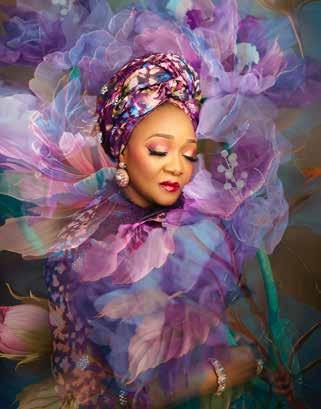
Honorable Imaan SulaimanIbrahim, fsi, is a leader like no other — a dynamic force whose work and vision have touched countless lives. A passionate advocate for women, children, and vulnerable communities, she has dedicated over two decades of her life to advancing social development, migration governance, conflict resolution, and humanitarian response. Her work is driven by an unwavering commitment to creating a more just, equitable, and inclusive world for all. From leading critical government institutions to driving billion-dollar investment initiatives, Hon. Imaan combines compassion with strategic insight and bold leadership in a way that few can match. Her track record includes reforming NAPTIP in record time, facilitating the passage of long-overdue national laws, and spearheading efforts to provide education for Nigeria’s out-of-school children.

What Your Favorite Beauty Rituals Say About You

Is it just me, or does it sometimes feel like the whole world is stuck in a never-ending reality show—except no one remembers signing up for it?
Lately, I’ve found myself wondering when we all quietly agreed that every meal, moment, milestone, meltdown, outfit, and even grief must be documented on the internet. Social media used to be a fun place to catch up, share bits of life, and get inspired. Now? It’s starting to feel like a performance—and if you’re not performing, are you even relevant?
Don’t get me wrong—I understand the value of content. live for a good reel, a fashion transition video, or a behind-the-scenes moment from someone’s wedding day. I see the creativity, the effort, the storytelling. But I also miss something I didn’t even realise was disappearing: mystery. You know, that old-school concept of keeping a little something to yourself, of letting life happen without curating it in real-time.
miss when “privacy” wasn’t synonymous with “suspicious.” When you didn’t have to explain why you didn’t post your birthday, your boo, your promotion, your new car. When silence didn’t make people assume things were falling apart. Can we normalise living some moments just for ourselves again?
If you’ve ever felt this quiet discomfort too, you’ll want to read my opinion piece this week: “IF YOU’RE NOT POSTING IT, ARE YOU REALLY LIVING IT? — The Subtle Trap of Social Media Validation.” It’s a thought-provoking take on the current culture of oversharing, the subtle pressure to be “seen,” and the fatigue that comes with always having to document proof of life.
If you have also found yourself in the middle of a fun moment but suddenly paused to think, “Wait, did capture that?” or “Should post this now or save it for later?” then this piece is for you.
Speaking of fatigue, can we also talk about how the year has been flying by, like it’s in a rush to beat us to December? It’s May. Already. And if you’re anything like me, the burnout is real. Between adulting, deadlines, electricity prices, and the economy generally humbling us every other day, the need to escape is louder than ever.
OPINION: If You’re Not Posting It, Are You Really Living It? - The Subtle Trap of Social Media Validation
Pack Your Bags:


Which brings me to my favourite article this week, “PACK YOUR BAGS: The 10 Destinations We’re Obsessed With This Year.” From breathtaking spots right here in Africa (because not everyone’s bank account is in a relationship with the dollar ) to dreamy beach towns and mountain retreats, we’ve rounded up getaways that are fun, soulrecharging, and kinder to your wallet. Whether you’re planning a full-blown vacation or just daydreaming during your lunch break, this list will inspire your next break— even if it’s just a mental one.
So, welcome to the month of May. How are you really doing?
hope you’ve been taking care of yourself and making time to breathe.
hope you find a little magic this month in unexpected places and rediscover the most beautiful moments. Here’s to a beautiful May with a little more mystery and a whole lot of joy. I wish you an incredible month and a great week ahead. Love,


There’s a certain kind of magic in a dress that doesn’t shout but still turns every head. That’s the power of the Di’Ja Kaftan by Ejiro Amos Tafiri. It doesn’t rely on trends or theatrics — it’s effortless, elegant, and full of quiet confidence. You don’t wear this dress to be seen; you wear it to be remembered. Flowing and regal, yet grounded and wearable, it’s the kind of piece you can live in — and feel like royalty while doing so. From red carpet moments to at-home hosting, the Di’Ja Kaftan moves seamlessly with you — and here’s why everyone is falling for it:
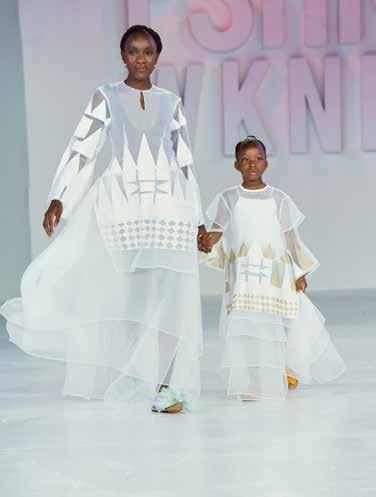

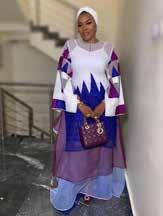
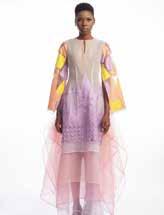
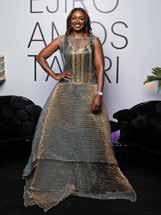
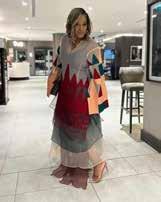
1. Grace in Every Drape
This kaftan is the definition of quiet luxury. The silhouette floats rather than clings, giving you that ethereal, goddess-like grace without trying too hard. It’s the dress that speaks fluently in elegance, even when you say nothing at all.
2. Bold Colour Meets Deep Meaning Forget basic. The Di’Ja dress serves rich, expressive colours and storytelling prints that celebrate African heritage with a global edge. Every thread and hue feels intentional — a visual love letter to culture, confidence, and individuality.
3. Embroidery That Whispers Luxury
This isn’t just detail; it’s dedication. Handfinished embroidery elevates this kaftan from beautiful to breathtaking. It dances along the neckline, frames the cuffs, and skims the fabric like a signature — the kind that tells you this was made with love, not mass-produced in a rush.
4. One Size (Actually) Fits All
No matter your body type, this dress works with you. It doesn’t squeeze, hide, or exaggerate — it flatters. It moves when you move, it flows where you flow. It’s inclusive, it’s elegant, and it proves that comfort doesn’t mean compromise.
5. Feel-Good Fashion, Literally The lightweight, breathable fabric is a dream in hot weather — or any weather, really. Whether you’re standing under the sun or sipping champagne indoors, the Di’Ja Kaftan keeps you cool, unbothered, and completely put together.
6. Rooted in Africa, Ready for the World Ejiro Amos Tafiri has cracked the code: how to blend African craftsmanship with international flair. This dress can hold its own on the streets of Paris or at a Lagos soirée. It’s proudly homegrown, yet globally fluent — a wearable passport of style.
7. Style It Your Way, Every Time Throw on statement earrings and stilettos for a glam moment or dial it down with flats and dewy skin — this kaftan gets the assignment every single time. It’s the kind of piece that reinvents itself with your mood, your vibe, and your plans.
8. Icon-Approved, Everyday Loved Inspired by the effortlessly stylish Di’Ja, this dress channels the spirit of modern African womanhood: strong, soft, and striking. It’s more than a name — it’s a symbol. Worn by style icons and everyday women alike, the Di’Ja Kaftan is not just a fashion choice. It’s a statement of self.
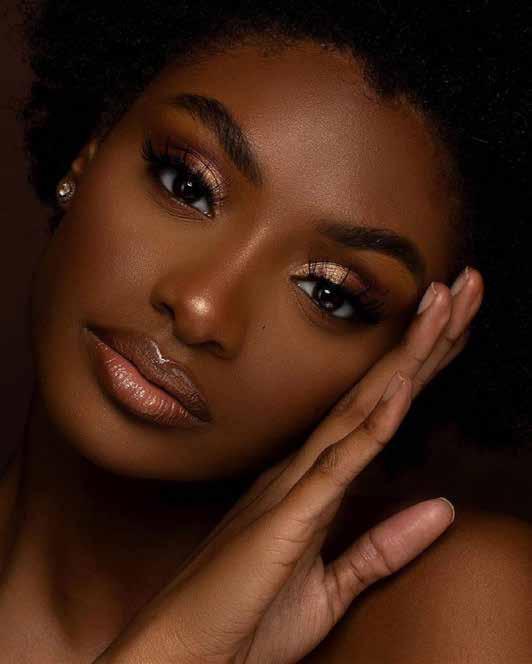
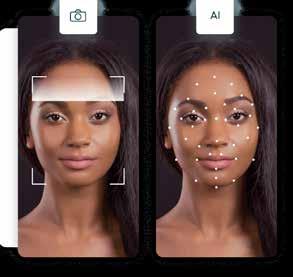
detailed reviews, ingredient breakdowns, and product recommendations, MySkin empowers you to shop smarter and glow harder.
Gone are the days when beauty routines were just about what’s on your vanity. Today, your smartphone might just be your most powerful beauty tool. From virtual try-ons to dermatologist-approved skincare regimens, beauty apps are reshaping the way we look after our skin and play with makeup — all from the palm of our hands. Whether you’re a beauty junkie or just trying to figure out what moisturiser won’t break you out, these apps are here to upgrade your glow game. Ready to swipe your way to better skin? Here are the beauty apps worth downloading now.
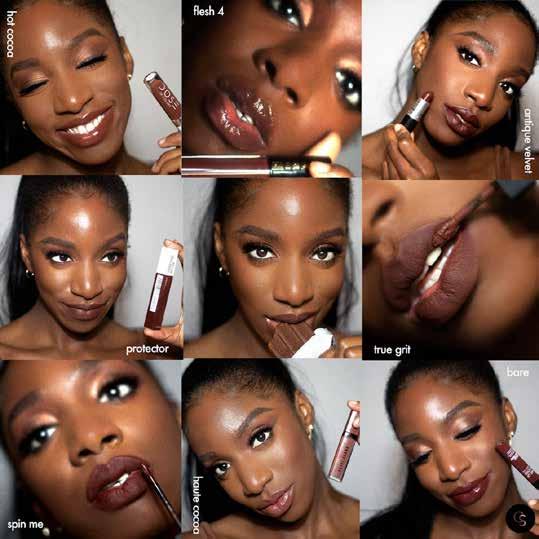
YOUCAM MAKEUP: Try Before You
Buy
Ever wished you could test out that bold red lip or graphic eyeliner before actually buying the products? YouCam Makeup makes it possible — no makeup remover needed. Using AR (Augmented Reality), the app lets you try on different looks in realtime and even offers tutorials tailored to your face shape. From foundation matching to eyelash trials, it’s like having a personal beauty assistant right in your pocket. Plus, it suggests products from your favourite
brands, making the shopping experience smarter and more fun.
MYSKIN: Your Personalised Skincare Tracker
Think of MySkin as your skincare accountability partner. It takes the guesswork out of choosing products by analysing your skin type, goals, and concerns and then building a tailored routine for you. Even better? It tracks your progress over time, so you’ll know what’s working and what’s just hype. With
DERMATICA: Prescription Skincare
Without the Waiting Room
Dermatica is like having a dermatologist on speed dial — minus the long wait times. After filling out a skin assessment, you get matched with a customised, prescriptiongrade treatment plan for concerns like acne, pigmentation, and fine lines. You’ll get regular updates to your regimen, ongoing support from licensed professionals, and progress reports to track your skin’s journey. It’s skincare that evolves with you.
BEAUTYPLUS: For Filter-Lovers and Selfie Queens
Sometimes, we all want that flawless selfie moment. BeautyPlus delivers it in seconds. The app offers skin-smoothing, blemishblurring, and makeup filters that elevate your photos without looking fake. Whether you’re touching up a Zoom headshot or spicing up your IG feed, BeautyPlus makes it easy to feel camera-ready with just a few taps. Bonus? You can test out beauty looks virtually before going IRL.
FOLLAIN: Clean Beauty, Curated Just for You
If you’re on a mission to clean up your beauty routine, Follain is your new best friend. The app is packed with skincare products from brands that meet rigorous clean beauty standards — think ethical, non-toxic, and effective. Based on your skin profile, it recommends safe products with full transparency. Detailed ingredient breakdowns and user reviews make decision-making easy, and you’ll feel good knowing you’re treating your skin — and the planet — with kindness.
COCOASWATCHES: Because Shade Matching Shouldn’t Be a Struggle
Finding the right shade shouldn’t feel like a guessing game, especially for deeper skin tones. CocoaSwatches takes the stress out of shopping by offering swatches that show how products actually look on different complexions. Its advanced colourmatching tech lets you see how that lipstick, foundation, or bronzer will show up on your skin before you click “add to cart.” Finally, an app that understands melanin-rich beauty needs.
By Funke Babs-Kufeji
Ankara and Adire aren’t just fabrics—they’re mood-lifters, conversation starters, and bold declarations of style and identity. Once reserved for special occasions or traditional events, these richly patterned prints are now everywhere—on runways, red carpets, and yes, even in your 9-to5 wardrobe. If you’ve ever wondered how to make them work for your everyday life without looking too extra, here’s your style cheat sheet.


1. Start with the Top Half
The easiest way to test-drive Ankara or Adire in your day-to-day wardrobe? Throw on a top. Whether it’s a crisp button-down, a puffsleeve blouse, or a relaxed peplum, it does all the heavy lifting for your outfit. Pair with classic jeans, tailored trousers, or a midi skirt, and you’ve got instant polish. It’s laid-back but bold—exactly the kind of combo we love.
2. The Power of a Good Dress
There’s something magical about an Ankara or Adire dress—it gives you the look with almost zero effort. From a fit-and-flare cut that swings with every step to a sharp, tailored sheath that means business, there’s a silhouette for everyone. Want something office-appropriate? Try a knee-length dress in muted tones with a sleek blazer over it. Heading out for the weekend? A floaty, tiered Adire maxi is your go-to for brunch or errands. Just add sandals or sneakers and go. Comfort? Check. Culture? Double check.
3. Small But Mighty Accessories
Not ready to commit to a full look?
Accessories are your low-risk, highstyle entry point. A vibrant Ankara headband, an Adire tote bag, or even a pair of printed earrings can give your outfit that pop without shouting. It’s also a great way to ease into bolder fashion choices. An Ankara clutch with a white shirt and denim? Yes. A silk Adire scarf tied around your ponytail or draped over your shoulders? Very yes. Little
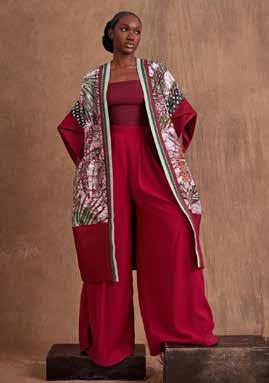
touches, big statement.
4. Play the Mix-and-Match Game
Let Ankara and Adire be the star of your outfit by anchoring them with wardrobe basics. Think denim, crisp white shirts, black tank tops, or neutral-toned blazers. Got a printed Ankara midi skirt? Pair it with a fitted tee and white sneakers for a street-style edge. High-waisted Adire trousers? Match with a black crop top and mules. Mixing prints? Totally doable—but let one piece do the talking while the rest of your outfit plays backup.
5. Layer Like a Pro Jackets and outerwear don’t have to be boring. An Ankara blazer or kimono thrown over a monochrome look adds instant personality. It’s an easy way to sneak culture into your wardrobe without sacrificing
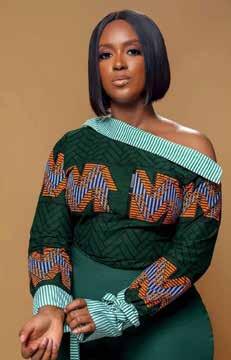
sophistication. For work, layer a structured Ankara jacket over a white button-down and slim pants. For a more laid-back moment, try a patchwork Adire kimono over a tank and jeans. It’s all about layering with intention.
6. Make Ankara WorkAppropriate (Because It Absolutely Is) Who says prints can’t mean business? With the right cuts and pairings, Ankara and Adire can absolutely thrive in a professional setting. Think tailored pencil skirts, sharp blazers, or sheath dresses in subtle hues. The trick is to keep your accessories and shoes simple—let the print handle the personality.
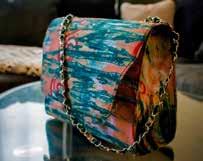
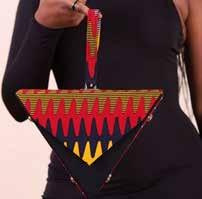
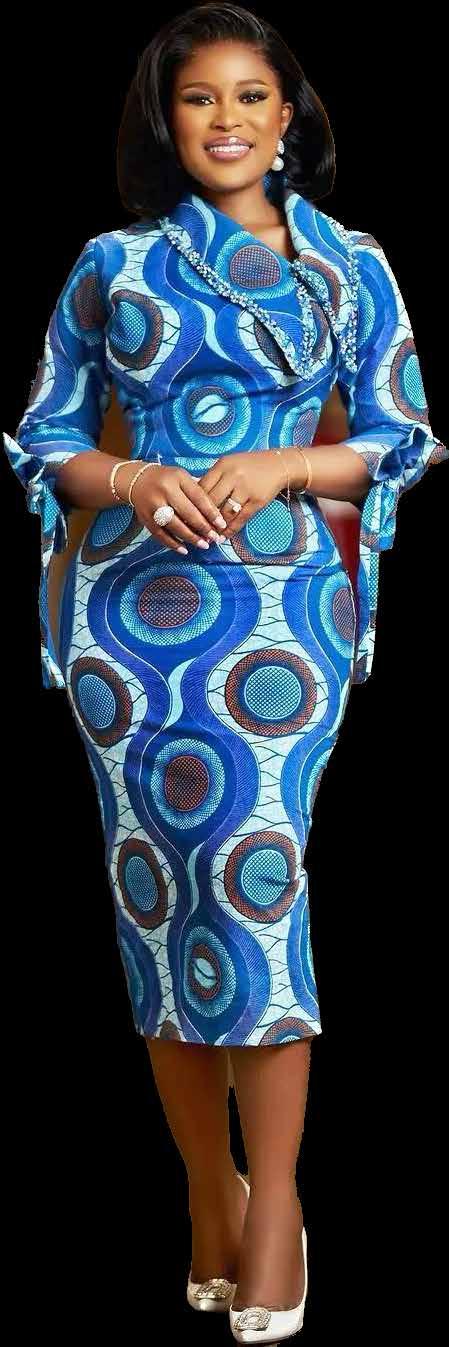
There’s something almost sacred about beauty rituals. Whether it’s a carefully curated 10-step skincare routine or a two-minute swipe of lip gloss before dashing out the door, these small acts aren’t just about appearance — they tell the world (and ourselves) who we are. Beauty rituals are personal signatures, often whispering things about our inner worlds before we even speak. So, what does your go-to beauty habit reveal about you? Let’s decode.
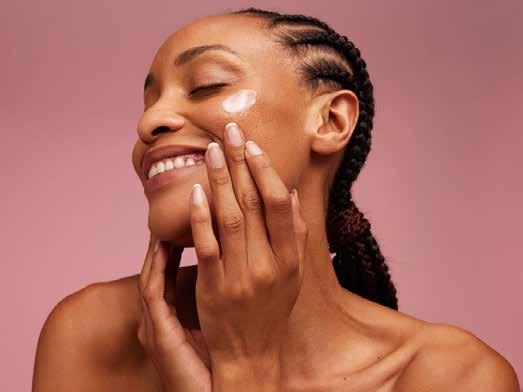
If You Swear by a 10-Step Skincare Routine...
If a Red Lip is Your Non-Negotiable...
You, my friend, are bold. A red lip is never shy. It announces you before you even say hello. You’re confident, unafraid of attention, and believe that life is too short for nude lipstick every day. You’re also likely the person who knows exactly which shade of red suits your undertone — a small but significant sign of a woman who knows herself. You’re passionate, magnetic, and, yes, just a little bit dramatic — but only in the ways that make life more interesting.
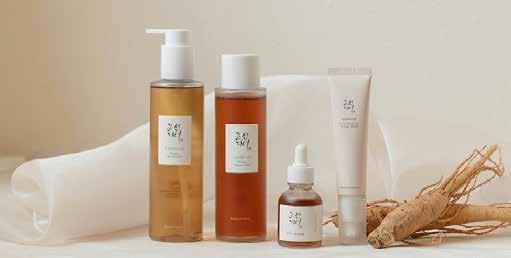
You are disciplined, patient, and probably a little bit of a perfectionist — in the best way. You understand that good things (and glowing skin) take time, and you’re willing to put in the work. To you, skincare isn’t just maintenance; it’s a form of meditation. Your cabinet is lined with serums, toners, ampoules with names even pharmacists might fumble. And while some might roll their eyes secretly, they wish they had your commitment. You’re the friend everyone texts at midnight with a photo saying, “Is this a pimple or a sign of impending doom?” And you always have answers.


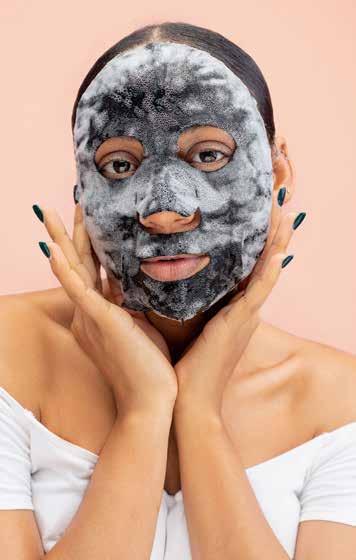
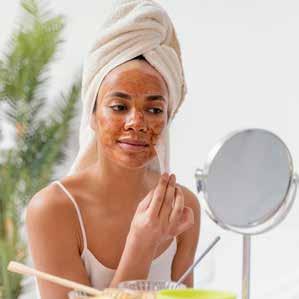
You know the value of a good pause. While the world races around, you’re the person who understands the beauty of slowing down, even if it’s just for 15 minutes under a sheet mask. You’re nurturing, introspective, and secretly a romantic — believing that even the smallest moments deserve ceremony. People might joke about your “mask time,” but they don’t realize it’s your secret weapon for handling everything life throws at you (with a glow).
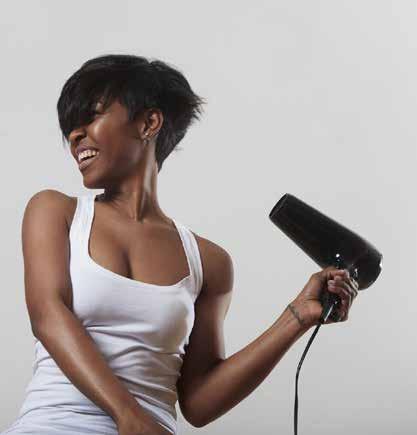
You’re mysterious, intentional, and loyal. While others hop from one viral perfume to the next, you stick to your scent like it’s a second skin. It’s not vanity; it’s identity. You believe in the power of memory and presence, and you love that your fragrance lingers in a room even after you’ve left. You’re the woman who people remember — sometimes long after they’ve forgotten your name.
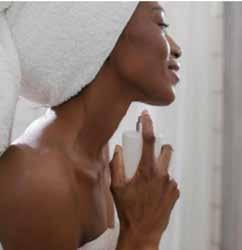



Creativity pulses through your veins. You’re playful, adventurous, and unafraid of reinvention. To you, beauty is a playground, not a fixed set of rules. One day you’re all about graphic liner; the next, you’re channelling 90s supermodel minimalism. You love a good risk — and you don’t mind a few raised eyebrows along the way. Life, after all, is too colourful to stick to beige.
If You Prioritise Hair Care Over Everything...
You understand the symbolism of hair — strength, sensuality, identity. You’re a perfectionist about your mane, and it shows. Your friends know better than to book brunch before your salon appointment. You are meticulous, detailoriented, and secretly believe (correctly) that good hair can save an otherwise bad day. Whether it’s silkpress sleekness, effortless curls, or protective braids, your hair isn’t just hair. It’s armor.

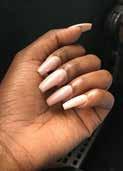
If You’re Obsessed with Nails...
You’re all about the finer details. You know that the smallest things — a neat cuticle, a perfect polish — often speak the loudest. You’re observant, stylish, and possibly a bit of a secret rebel; after all, a neon yellow manicure in a sea of neutrals says I’m here to have fun. You’re also the type who texts “Made it!” the second you land, books vacations with military precision, and never forgets a birthday.

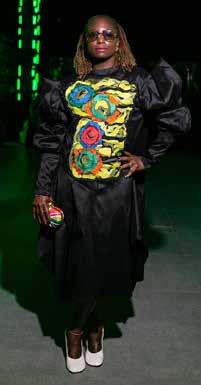


By Funke Babs-Kufeji
figuring out your personal style can feel like trying to define your personality in three words. One minute, you’re in love with crisp, neutral tailoring; the next, you’re daydreaming in technicolour and midi dresses. But here’s the thing: style isn’t static, and it’s definitely not something you have to “figure out” overnight. It’s a process. A fun one. One that evolves as you do. So, if your wardrobe is full but you still feel like you have “nothing to wear,” here’s your nopressure, no-perfection guide to tuning into your true style vibe. No chasing trends. No unnecessary rules. Just you—feeling like your best self in clothes you love.
1. Start With Your Current Obsessions
Before diving into mood boards and style quizzes, take a long look at your closet. What pieces are you constantly reaching for? Which outfits make you feel confident, comfortable, and completely like you? That’s where your real style lives—not in the stuff that gathers dust. Forget what fashion says you should wear. The magic is already in your wardrobe—you just need to recognise it.
2. Build a Moodboard, Even If You Hate Moodboards
Trust us: visuals work wonders. Whether it’s Pinterest, saved Instagram posts, or pages ripped from an old magazine, gather anything that catches your eye. Don’t limit yourself to just outfits—textures, colours, interiors; even art can reveal a pattern. Step back and look at what you’ve saved. Are you drawn to clean lines? Soft neutrals? Maximalist prints? Congratulations—you’re starting to crack your style code.
3. Give Your Style a Name (Or at Least a Vibe)
Here’s where it gets fun. Describe your style using 2–3 words that capture how you want to feel in your clothes. Think: “laidback luxe,” “chic but chill,” “bold and feminine,” or “minimal with an edge.” These words become your style anchor. When you’re shopping or standing clueless in front of your wardrobe, ask: does this fit the vibe? If not, it’s probably not worth your time (or money).
4. Play Dress Up (No Pressure, Just Curiosity)
Yes, you’re allowed to experiment. In fact, you should. Use a week to test-drive your style words and mood board finds. Try new pairings, revive forgotten accessories, or wear that bold colour you’ve been avoiding. Take mirror selfies, write notes, or just vibe-check yourself in the mirror. What feels like you? What feels like a costume? The goal isn’t to get it perfect—it’s to learn what feels good. Style is trial and error in the best way.
5. Shop Like You Mean It
Now that you’ve got some clarity, you’re ready to shop—but smarter. Ask yourself three things before buying anything: Do I love this? Will I actually wear it? Does it work with what already own? If it’s a no on any of those, keep it moving. When you shop with intention instead of impulse, you’ll build a wardrobe that feels cohesive, exciting, and—best of all—true to you. More clarity, less clutter. More confidence, fewer regrets.
Bottom line: Your personal style isn’t something you copy or chase. It’s something you uncover. So take your time, have fun with it, and remember—your vibe is your superpower. Dress like it.
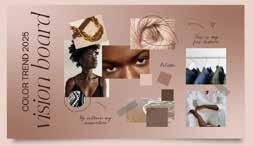
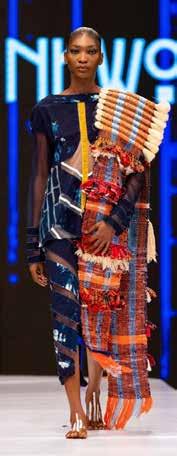


We’ve all had that one photo we wanted to unsee. Maybe the angle was off, the lighting was unforgiving, or you looked more confused than cute. You weren’t alone. Cameras are always rolling these days — at weddings, brunches, vacations, and even elevator selfies — so knowing how to be camera-ready is no longer reserved for celebrities or influencers. And no, this isn’t about looking like you just walked off a runway. It’s about showing up as your best, most confident self. Because the truth is, anyone can be photogenic with a few simple tricks. And once you know them, you’ll never dread the flash again. Here are seven secrets that’ll have you posing like a pro — no stiff smiles, awkward limbs, or delete-button regrets required.
1. Posture Is Everything (Seriously)
Posture is the unsung hero of great photos. Slouching flattens your energy — and your outfit. But standing (or sitting) tall instantly sharpens your silhouette and elevates your entire presence. Think of it like this: shoulders back, chest lifted, neck elongated — but without looking like you’re trying too hard. You want to look effortless, not like you’re bracing for a scoliosis exam. Good posture gives you height, grace, and, most importantly, confidence — and that reads loud and clear in pictures.
2. Light Is the Real MVP
Ask any photographer: lighting can make or break your photo. The right light smooths softens, and flatters; the wrong one creates shadows you didn’t even know your face could make. Natural light is your best friend — especially during golden hour, that glowy pocket just after sunrise or before sunset when everyone looks like they’ve been lightly kissed by the sun.
If you’re indoors, step near a window and let that diffused daylight bounce gently off your face. Harsh fluorescent lighting and direct flash? Avoid them like a bad ex — they do nothing for your complexion. Lighting s your free Instagram filter. Use it wisely.
3. Relax Your Face (Seriously, Breathe)
Nothing says “trying too hard” like a frozen smile or tense jaw. We’ve all seen those photos — the ones where you look more scared than snatched. The trick? Breathe. Literally, before the shutter clicks, take a deep breath, think of something joyful or funny, and let that emotion live gently on your face.
A soft smile. Lightly parted lips. Eyes that look like they’re mid-laugh. These little shifts bring warmth and authenticity to your expression. Remember, the best photos don’t just show what you look like — they show how you feel.
4. Let Your Eyes Do the Talking
Forget everything you’ve been told about “smiling with your eyes” — this isn’t a Tyra Banks masterclass. But your eyes do matter. A great trick? The “squinch.” Not quite a squint, not quite a wide-eyed gaze — it’s that sweet middle ground where your lower lids lift slightly, giving your face dimension and intention.
Whether you’re looking straight at the camera or gazing off into the distance like you’re in a music video, let your eyes express something. Mischief. Thoughtfulness. Serenity. Make it feel like you’re in the photo, not just in front of it.
5. Hands — The Silent Scene-Stealers
You know those gorgeous red carpet shots where the subject looks so relaxed — and then you realize it’s because their hands are perfectly placed? That’s no accident. Hands can be tricky. Too stiff, and you look awkward; too fidgety, and you distract from everything else. Here’s the cheat code: give them something to do. Hold your clutch. Play with your earring. Tuck a thumb into your pocket. Gently touch your face or hair. Think movement, not mannequin. Your hands should complement your pose — not compete with it.
6. Angle Like a Pro
One of the biggest myths? That straight-on shots are the most flattering. Wrong. Turning your body slightly — just a few degrees — adds shape and dimension. Stand with one foot slightly in front of the other, shift your weight to the back leg, and tilt your head ever so slightly—soft lines. Gentle curves. It’s the difference between a passport photo and a Vogue cover. And here’s the secret: it’s not about copying someone else’s pose. It’s about finding your angles — the ones that make you feel bold, graceful, and completely you. Play. Practice. Own your shape.
7. Confidence Is the Ultimate Filter
Let’s cut to the chase: the most stunning people in photos aren’t always the most conventionally beautiful. They’re the ones who radiate ease, joy, and self-possession. The ones who aren’t worrying about how they look — because they already know they’re owning it. Confidence isn’t just visible — it’s contagious. It’s what makes someone magnetic in a photo. So even if your hair’s a little wild or your dress isn’t sitting quite right, don’t shrink. Laugh. Pose like you mean it. Dance a little. That energy? That’s what people remember. That’s what turns a photo into a moment.
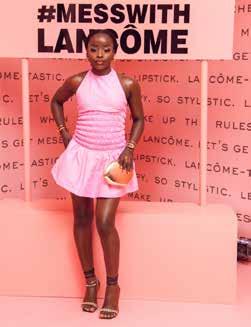
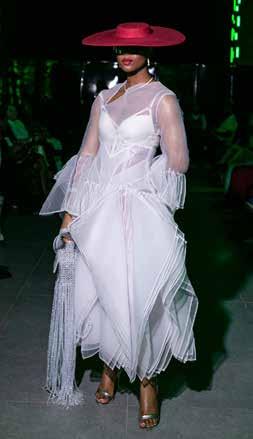

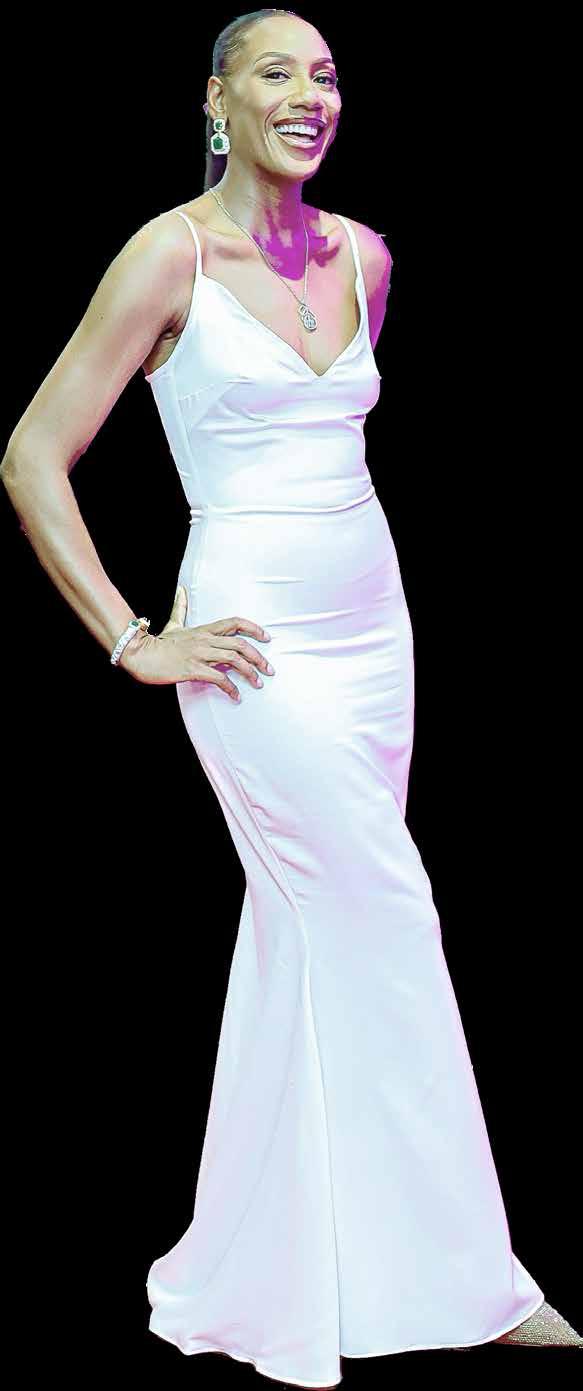

There’s a quiet shift that happens in your 30s. Your skin no longer bounces back like it used to after a late night or a weekend of indulgence. The glow that once came effortlessly now needs a bit of backup. Fine lines start introducing themselves, and your onceflawless selfie filter looks more like a necessity than a fun add-on. But before you spiral into panic-buying every serum on the shelf, here’s the good news: with the right tweaks, your skin can absolutely thrive in your 30s—and well beyond.
Think of this era as your skincare glow-up, not a countdown. Here’s how to stay radiant, lifted, and luminous long after your twenties are in the rearview mirror.
By Funke Babs-Kufeji
1. Sunscreen Isn’t Optional – It’s a Daily Ritual

Let’s get one thing straight: SPF is your forever friend. It’s not just for beach days or when the sun is blazing. UV rays don’t care if it’s cloudy; yes, even your phone and laptop screens are lowkey messing with your skin. Make a broad-spectrum SPF 50 with PA++++ your ride-or-die. Want extra credit? Choose one that blocks blue light, too.

2. Say Hello to Retinoids –Your Skin’s New BFF
If you’re not already using a retinoid, what are you waiting for? This isn’t just another beauty trend. Retinoids are backed by science— and dermatologists swear by them. They speed up cell turnover, fade fine lines, and boost collagen like a charm. Start slow (think 0.2%–0.5%) and let your skin ease into it. The results are worth it.
3. Hydration & Barrier Care – Non-Negotiables
That tight, dry feeling you sometimes wake up with? That’s your skin barrier, crying for help. In your 30s, protecting this barrier becomes essential. Look out for moisturisers loaded with hyaluronic acid, ceramides, and peptides. They hydrate deeply and repair the skin’s natural shield. Skip the heavy perfumes and stick to formulas that are tested, gentle, and designed for long-term results.
4. Antioxidants Are Your Daily Defence Squad
Your skin is exposed to way more than you realise—pollution, stress, screen time, the occasional cocktail. All of these contribute to oxidative stress, which speeds up ageing. Fight back with antioxidants. A vitamin C serum in the morning (10–20%) boosts glow and shields your skin, while niacinamide at night calms inflammation and evens out skin tone.
5. Get Pro About It – In-Clinic Treatments Are Worth It
Skincare doesn’t stop at your bathroom mirror. In-office treatments are your secret weapon. Think chemical peels to brighten, microneedling to smooth, or radiofrequency therapy to lift and tighten. These non-invasive procedures supercharge collagen and give you that refreshed, “just-back-from-vacation” skin—even when you haven’t left the house.




6. Glow from the Inside Out
Your skincare routine starts in the kitchen—and maybe even in your sleep schedule. Load up on omega-3s, leafy greens, nuts, berries, and antioxidant-rich foods. Cut back on processed sugar and alcohol, which quietly sabotage collagen and hydration. And if you needed a reason to prioritise sleep and stress management, let this be it: your skin literally thanks you for it.

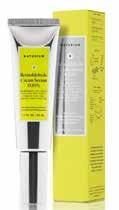






@thisdaystyle @thisdaystyleon www.thisdaystyle.ng
BY KONYE CHELSEA NWABOGOR
here was a time when a great night out ended with laughter echoing into the night and memories tucked safely into the folds of your mind. Today, it ends with a flood of Instagram Stories, Snapchat filters, and a mental tally of likes.
A perfect dinner, a spontaneous trip, a mundane coffee run — if it’s not posted, did it even happen?
Welcome to the age of over-sharing, where the line between living and performing has never been more blurred.
It’s not entirely our fault. Social media has rewired our instincts. Once upon a time, you would be content to quietly experience your joy. Now, there’s an almost instinctive reflex: you pull out your phone first before pulling yourself into the moment. A new car? It needs a “key reveal” post. Your best friend’s birthday dinner? It needs a carousel with an obligatory “About last night” caption. A simple walk around Lekki Conservation Centre? If it’s not on your Instagram grid, you might as well not have gone.
And nowhere is this more relatable than in Nigeria, a country where perception and status often walk hand-in-hand. Success — or at least the appearance of it — has become a prized currency, and social media is now our collective stage. Lagos especially feels like a city where you can post your way into a new tax bracket. Dinner at a bougie restaurant? Gym selfies at a wellness resort in Ikoyi? Beach shots at Ilashe? Post it. Tag it. Geotag it. Watch the followers grow.
But why have we become so obsessed?
It’s partly cultural. Nigerians, for all our resilience, carry an unspoken pressure to show progress. Our society has long equated external markers — car, house, clothes, vacations — with internal worth. Social media simply amplified an old habit. It didn’t invent our need for validation; it industrialised it.
In a recent survey on digital habits across Africa, Nigerians ranked among the highest in time spent on social platforms. And it’s not hard to see why: we are vibrant storytellers by nature. We love gist. We love community. Social media allows us to build digital communities where gist never ends — and where your life story unfolds like a Netflix series, episode by episode, post by post.
document the dress reveal, the makeup process, the ride to the venue, the first dance, the after-party. Otherwise, what was it all for?
There’s a famous saying among Nigerian youth now: “If it’s not on Instagram, it didn’t happen.” Half-joke, half-truth. Because even while we laugh, there’s a part of us that believes it. There’s a strange kind of pressure to package every experience, to live not just for the sake of iving but for the sake of showing that we are living.
But at what cost?
The paradox is glaring: in trying to prove we are living fully, we often end up living less authentically. How present are you when you’re already thinking about your next post? How deeply do you feel about an experience when you’re viewing it through the lens of “How will this look online?”

IF YOU’RE NOT POSTING IT, ARE YOU REALLY LIVING IT? - THE SUBTLE TRAP OF SOCIAL MEDIA VALIDATION


But the darker side of this is the curated self — a version of ourselves shaped not just by who we are, but who we think people want us to be. The subtle competition. The FOMO (Fear of Missing Out). The race to outdo, outshine, outpost.
You see it everywhere: the “soft life” culture, for instance, is now a full-blown phenomenon. And while celebrating enjoyment and luxury isn’t the problem (if anyone deserves to rest, it’s Nigerians), the performance of “soft living” often feels obligatory. It’s no longer enough to enjoy a vacation; you have to create content on the beach, straw hat tilted just so, cocktail glistening in the sun. It’s no longer enough to attend a wedding; you must

We’ve normalised this so much that people now experience moments with an audience in mind. Birthday surprises are staged. Charity gestures are documented with precision. Even grief is sometimes captured mid-performance — a montage of hospital visits, heartfelt captions, and crying selfies. And the internet, which was once a window to connect, often feels like a mirror to perform.
In Nigeria, this pressure cuts across class. It’s not just the influencers or celebrities; it’s the everyday person, too. From the student doing “First Day of School” photo dumps to the aunty posting her “early morning prayer walk” selfies, everyone’s participating — consciously or not. And if you think you’re immune, consider this: how often do you find yourself reaching for your phone, almost unconsciously, during moments that used to feel private?
So, what’s the way forward? First, a bit of honesty with ourselves. It’s okay to post. It’s okay to share. But it’s also okay to just experience — without the need for witnesses. Also, it’s worth reclaiming some spaces for yourself. Not every achievement needs to be announced. Not every heartbreak needs a cryptic sub. Not every soft moment needs a soft-life reel. Some things are sweeter when savoured privately. As the old Igbo proverb goes, “The bird that knows how to fly does not fly during the day for everyone to see.”
Real living happens in the silences too — in the unposted conversations, the unfiltered laughs, the quiet wins. And sometimes, the most powerful experiences are the ones that no one else knows about.
As we keep experiencing this digital-first world, the goal isn’t to abandon sharing altogether. (Let’s be honest, Nigerians will always find a way to pepper their followers.) The goal is balance. Authenticity. Freedom. The freedom to live richly offline, even when the WiFi is strong.
Because at the end of the day, a life well-lived isn’t measured by posts, likes, or followers. It’s measured by memories — the kind too beautiful, too raw, too real to be captured by a camera lens. And that, dear reader, is something worth holding onto.


Honorable Imaan Sulaiman-Ibrahim, fsi, is a leader like no other — a dynamic force whose work and vision have touched countless lives. A passionate advocate for women, children, and vulnerable communities, she has dedicated over two decades of her life to advancing social development, migration governance, conflict resolution, and humanitarian response. Her work is driven by an unwavering commitment to creating a more just, equitable, and inclusive world for all.
From leading critical government institutions to driving billion-dollar investment initiatives, Hon. Imaan combines compassion with strategic insight and bold leadership in a way that few can match. Her track record includes reforming NAPTIP in record time, facilitating the passage of long-overdue national laws, and spearheading efforts to provide education for Nigeria’s out-of-school children. As Nigeria’s current Minister of Women Affairs, she is focused on empowering 10 million women, transforming conversations around gender equality, and ensuring that every woman and child in the country has a fair shot at opportunity and dignity. In this candid conversation with Funke Babs-Kufeji, she shares her inspiring journey, the driving forces behind her work, and what fuels her mission to serve. With a global perspective yet deeply grounded in her community, Hon. Imaan’s leadership is creating a future we can all look forward to.
Can you take us back to the early days of your career?
What inspired your journey into social development and humanitarian service?
My journey into social development and humanitarian service isn’t about politics but purpose. My story is not a conventional one. I didn’t grow up aspiring to be a politician. My dream was to become an entrepreneur par excellence, to create value and build systems that uplift my family and community. Watching my father help develop Nigeria’s new capital city, Abuja, was all the motivation needed.
Sometimes, life redirects your path in the most unexpected ways. While living in the UK, one of the most pivotal moments of my life came when my son fell critically ill and required brain surgery. We spent several months at the government-funded Great Ormond Street Hospital. The care we received was phenomenal. The professionalism, the dignity and the sheer humanity of the experience stirred something deep in me.
In those difficult months, I made a covenant with GOD. I said, ‘If YOU heal my son and restore him completely, I will return to Nigeria and dedicate my life to serving the nation. My mission became contributing towards building a nation where every child, regardless of background, can receive quality care, dignity and opportunity. Many had given up hope on my son’s full recovery but by the grace of God, he healed. And I kept my promise. packed my bags, moved back to Nigeria and began to navigate my way into social impact and, eventually, public service. I didn’t enter this space with political ambition. I came with a burden, a vow and a heart to serve. From my work as a Senior Sales Director in Mary Kay UK & Ireland until today, my compass has always been centred on people, building systems of hope, protection and empowerment. So, what inspired my journey? A promise. A healing. A deep conviction that every life matters and that we must be bold enough to help build the kind of society where dignity is not a privilege, but a right.”
As DG of NAPTIP, you spearheaded reforms that significantly improved Nigeria’s international ranking. Nigeria was upgraded from the Tier 2 Watchlist to Tier 2 in the U.S. Trafficking in Persons Report—a significant milestone. What were the key internal reforms or stakeholder strategies that contributed to this success in just six months?
Our approach at NAPTIP was immediate and multi-pronged. Internally, led a full organisational diagnostic to address institutional weaknesses. We restructured our operations, streamlined case management systems, and introduced accountability mechanisms. More importantly, we prioritised inter-agency coordination, bringing key stakeholders from law enforcement, immigration, and civil society into a joint action framework. We also launched a national awareness campaign and set up a functional helpline to deepen public understanding of trafficking and encourage victim reporting. These reforms sent a strong signal, that Nigeria was not just committed to meeting global standards but that we were determined to lead the fight.
Human trafficking is a deeply complex and transnational issue. How did you strengthen cross-border collaboration and intelligence sharing with international partners during your time at NAPTIP, and what lasting impact has that had on Nigeria’s anti-trafficking efforts?
We understood early that trafficking networks operate without borders, so our response had to be equally transnational. We revitalised Nigeria’s bilateral frameworks with transit and destination countries, including Italy, Niger, Lybia and the United Kingdom. Through diplomatic engagement, we activated cross-border referral protocols and participated in joint investigations with other security institutions locally and internationally. We also worked closely with service officers in key missions abroad. These measures have not only improved case resolution rates but also enhanced Nigeria’s standing as a reliable partner in global anti-trafficking efforts.
Can you talk about the process and impact of getting the NCFRMI Act 2022 passed after 14 years of stagnation?
The passage of the NCFRMI Act was the result of unwavering persistence, policy clarity, and stakeholder consensus. For over a decade, attempts had failed due to fragmentation, weak legislative backing, and shifting political priorities. When assumed office, we prioritised the bill as an institutional survival issue. I engaged the
and
communities. The Act has now given legal identity to millions of persons of concern and established a robust framework for durable solutions.
Looking back, what was the most challenging case or moment you encountered at NAPTIP that reshaped your perspective on the realities of trafficking, and how did it influence your approach to victim-centred policy and advocacy?
One particularly harrowing case involved a trafficked teenage girl rescued from a syndicate. Her physical scars were painful, but her emotional trauma was deeper. What struck me most was how poorly the system had supported her reintegration. It was a wake-up call that rescue is only the beginning, but restoration must follow. From that moment, I prioritised trauma-informed care, survivor shelters, and vocational reintegration programmes. It reshaped our entire philosophy at NAPTIP: justice must be victim-centered, not process-centered.
As Nigeria’s first female Minister of Police Affairs, what specific innovations did you introduce to promote community policing and inclusivity?
We introduced a reform roadmap anchored on inclusivity, intelligence-led policing, and community ownership. Key innovations included a policy shift to strengthen community policing structures and strengthening gender desks in police formations. We also advocated for women’s leadership in the Force Leadership, and the first Female Force Secretary was appointed based on that advocacy. These innovations bridged trust deficits and made the police more responsive to the people they serve.
Within just four months at the Ministry of Police Affairs, you secured a 1,000% increase in funding for key initiatives. Amongst others, what do you believe was the turning point that earned stakeholder buy-in for your vision?
The turning point was presenting a data-backed, results-driven reform plan that aligned national security goals with social stability. I demonstrated how strategic investment in policing could yield public trust and security dividends. I also rallied key stakeholders through high-level engagements and transparent planning. When stakeholders saw the clarity, ambition, and national value proposition, they responded with unprecedented support.
Now, as Minister of Women’s Affairs, you’ve outlined a bold vision to economically empower 10 million women in three years. What specific policy tools and partnerships are you leveraging to make this goal achievable, and what strategies are in place to ensure long-term impact beyond the initial reach?
To deliver on our bold vision of economically empowering 10 million women in three years, we are leveraging strategic programmes like the Nigeria for Women Scale-Up Project, which is currently underway, and targeting a minimum of 4.7 million women through access to finance, skills, and
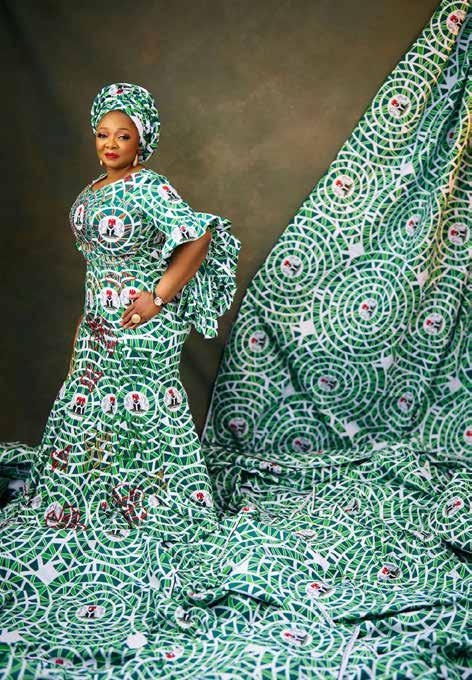
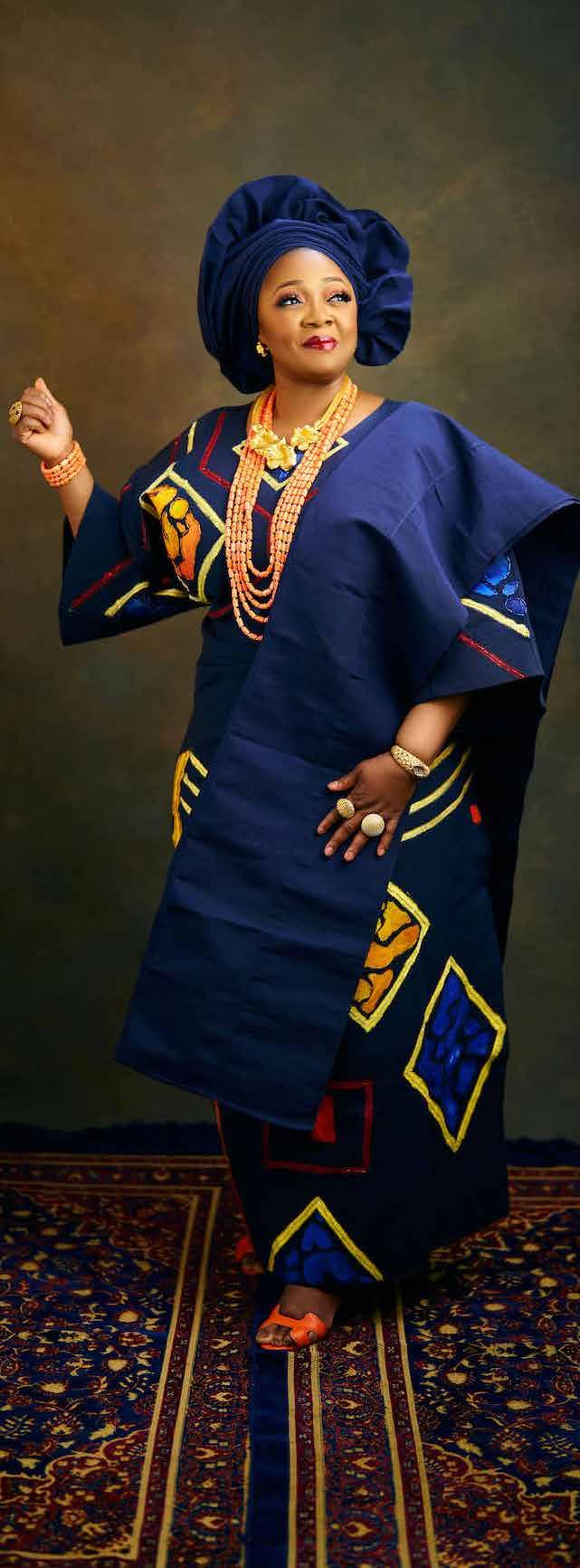
markets, and the MOWA-SARA Project, which is reaching 500,000 vulnerable women with similar targeted support including vocational training and digital inclusion. Our long-term strategy focuses on institutionalising these programmes and using realtime data systems to ensure sustained impact.
Empowering women economically requires more than just funding—how are you addressing systemic barriers such as land ownership, access to credit, and market linkages?
We are advocating for women’s access to land through State Governors and State Commissioners of Women’s Affairs, especially within agribusiness. For access to credit, we are partnering with development finance institutions, commercial banks and fintech firms to deliver low-interest, collateral-light credit products tailored for women. Through the Happy Women Platform, we are creating marketplace linkages, helping women sell their goods and services directly to buyers, both locally and internationally.
Are there specific sectors or industries you’re targeting to boost women’s participation and leadership? Yes. We are targeting sectors where women are historically underrepresented but have high growth potential. These include the blue economy, renewable energy, digital and creative industries, green entrepreneurship, and extractives. We are also investing in female-led agribusinesses and micro-manufacturing clusters. Our goal is both inclusion and placing women at the helm of these emerging industries.
How does your Ministry ensure inclusivity in program design, especially for women in rural, conflict-affected, or underserved communities?
Inclusivity begins with participatory design. We conduct needs assessments through local women’s groups, traditional leaders, and community-based organisations. Programmes are then tailored with context-specific delivery models.
Can you share some early success stories or impact assessments from the first wave of programs that have already reached over 5 million women?
The first wave of our flagship programmes - the Nigeria for Women Scale-Up Project and the MOWA-SARA Project - have already commenced and are collectively targeting over 5 million women nationwide. Early reports from implementation states show remarkable progress: thousands of women in Women Affinity Groups (WAGs) under the Nigeria for Women Project have accessed savings, start-up capital, and business development training, leading to increased household incomes and stronger community networks. Similarly, under the MOWA-SARA Project, women receive targeted support packages, including vocational kits and digital tools. These early outcomes affirm that with the right structures and partnerships, large-scale women’s empowerment is achievable and is already underway.
and impact across various empowerment interventions. Additionally, the National Council of Women Societies (NCWS) serves as a vital platform through which we receive annual feedback and performance updates from states.
How are you working with security agencies, legal institutions, and communities to enhance protection for women and girls?
We are working through targeted advocacy and technical support to the police, judiciary, social welfare, and civil society. We are supporting the ecosystem with capacity for implementing survivor-centered protocols, fast-tracking prosecutions, and ensuring safety for at-risk women. We’re also training security personnel on gender sensitivity and trauma-informed approaches and working with traditional and religious institutions to foster protective community environments.
Nigeria recently recommitted to the Beijing Platform for Action and the UN Women Agenda. What concrete steps are being taken to deliver on those pledges?
We are aligning our national strategy with the 12 critical areas of the Beijing Platform, including education, health, political participation, and economic empowerment. Our National Gender Equality Policy is being updated, and we are engaging key institutions to ensure we mainstream gender targets into the National Development Plan and annual budgets at both the national and subnationals level. At the international level, we are deepening engagements with UN Women and AU platforms to ensure accountability and peer learning.
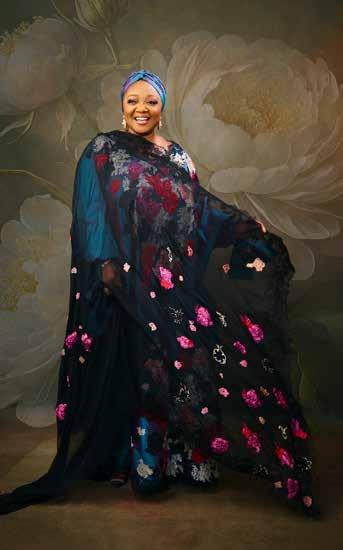
With gender-based violence still a pressing issue in Nigeria, what targeted interventions is your Ministry implementing to support survivors and prevent recurrence?
We are expanding Sexual Assault Referral Centres (SARCs) across the six geopolitical zones to provide survivors with integrated services, including medical, legal, psychosocial, and shelter support. We are working on a national Standard Operating Procedures (SOPs) for GBV response and working towards strengthening the implementation of the VAPP Act in all states –this has commenced with a review of the Act. Additionally, we are deploying community watch structures and male ally networks to shift social norms and prevent recurrence.
How is your Ministry measuring success across various women-focused programs - are there dashboards, real-time data systems, or evaluation mechanisms in place?
We have tracking and evaluation mechanisms that are project/ programme-focused. The Gender-Based Violence (GBV) Dashboard, for instance, enables us to monitor reported cases and response efforts in real-time. To further strengthen our evidencebased approach, we are currently developing a comprehensive Monitoring and Evaluation Dashboard for the Ministry, which will consolidate data from all programmes and enhance decisionmaking and strategic planning. Through the forthcoming Happy Woman App, we will also track programme reach, service uptake,
What partnerships with international development agencies, private sector actors, and civil society are most impactful in accelerating gender parity?
We are fortunate to have a wide network of domestic and international partners who are playing critical roles in advancing our gender equality agenda. These partnerships span development agencies, private sector institutions, foundations, and civil society organisations, all contributing expertise, resources, and innovative solutions across our priority areas. From economic empowerment and education to health, protection, and leadership, these collaborations enhance our reach and deepen impact. While I may not single out specific institutions, must emphasise that the collective strength of these partnerships—anchored in shared vision and mutual accountability— is accelerating progress towards gender parity in Nigeria.
As someone with such a broad background from humanitarian work to national security, what fresh perspective are you bringing to the Ministry of Women’s Affairs? bring a systems-thinking mindset, which is the ability to connect macro policies with micro realities. My background in national security teaches me that gender issues are security issues. My experience in migration shows that development must be inclusive to be sustainable. I approach gender equality not as a niche concern but as a strategic imperative for national stability, resilience, and prosperity. This helix informs how we design how programmes and interventions.
You lecture internationally in Rome and Nigeria. What have these academic engagements taught you about bridging global knowledge with local realities?
They’ve taught me the power of contextual intelligence. Global knowledge offers frameworks, but true impact happens when those frameworks are adapted to local realities. bring lived experience to the classroom, and in return, gain fresh insights from scholars and students worldwide. It’s a two-way exchange that enriches both my policy work and my pedagogy.
You wear many hats—entrepreneur, policymaker, reformer, academic. What continues to drive your passion across these intersecting fields, and what keeps you going on tough days?
What keeps me going is the unshakable belief that change is possible even in the face of complexity. draw strength from the stories of women who have overcome adversity, from the faces of children whose futures depend on our work, and from the silent prayers of communities who believe in our promise. On tough days, remember that service is a sacred responsibility and that to whom much is given, much is expected.
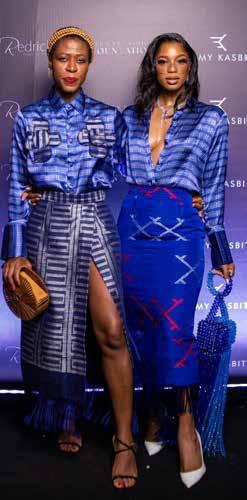
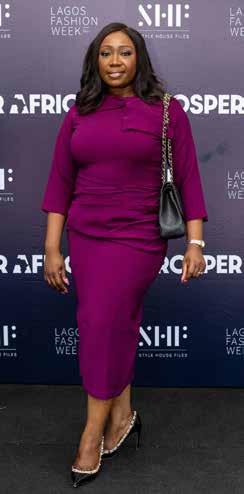

By Funke Babs-Kufeji
here’s something that happens when you slip into an outfit that fits just right. Not just in size but in vibe.
You walk a little taller. You hold your head a little higher. You don’t second-guess that room you’re about to walk into. That’s the power of fashion — real, undeniable, and deeply personal.
Fashion isn’t just about trends or labels. It’s not always about the clothes themselves. It’s about what they make you feel. And that feeling? That’s power.
A sharply tailored blazer when you need to make a statement. A silk slip dress is perfect when you want to feel soft but strong. A pair of sunglasses that says, “Yes, saw your comment — and no, I’m not fazed.” Whether you’re dressing for a boardroom, a brunch, or a breakdown, fashion gives you a way to own your moment. To be seen on your own terms. In Nigeria, this relationship with fashion is even more layered. We don’t do basic. Even on a quick run to the store, someone somewhere is wearing lashes, ankara shorts, and heels — because why not? We dress like we mean it. Whether it’s a dramatic gele for Sunday service, a sharp kaftan for a wedding, or streetwear that merges Lagos grit with global edge, our style is never an afterthought. But here’s the thing: it’s not just about looking good for the gram. There’s something deeper at play. Fashion allows us to take control of perception, narrative, and energy. On days when

life feels shaky, dressing up can be grounding. A form of protest, even. A way to say, “I may not have it all figured out, but at least I can own how show up.”
There’s a reason people say, “Dress how you want to be addressed.” It’s not just a catchy phrase — it’s a strategy. Your clothes speak before you do. They tell the world who you are, or at least who you’re trying to be that day. And you get to rewrite the story whenever you like.
Power dressing doesn’t always mean a stiff suit or six-inch heels. It might mean a pair of jeans that hugs you in all the right places. It might mean a T-shirt from your mum’s old wardrobe that makes you feel rooted. It might be a piece from a local designer who gets your vibe better than any international brand ever could.
The power lies in the choice — and that choice is yours.
And let’s not act like we don’t all have that one outfit. You know the one. The outfit that never misses. The one you wear when you need the universe to align in your favour. That’s not just style. That’s intention. That’s power dressing in its purest form.
Fashion is also deeply emotional. It can lift you. Transform you. Remind you of who you are — or who you’re becoming.
A red lip and an all-black look isn’t just fashion; it’s a mood. A vibe. A warning.
And let’s talk about the storytelling.
Every outfit tells a story. Whether you’re referencing culture, heritage, heartbreak, joy, or rebellion — what you wear is always saying something. Even silence has a look. And that, in itself, is powerful.

It’s easy to talk about being intentional in relationships. It’s harder to live it. Because real intentionality isn’t about saying the right words or setting relationship goals in the Notes app. It’s about moving through love — and through life — awake. Present. Willing. And if we’re honest, many of us still mistake desire for intention. We want connection, but we don’t always build it. We want love, but we don’t always choose it — especially when it’s inconvenient.
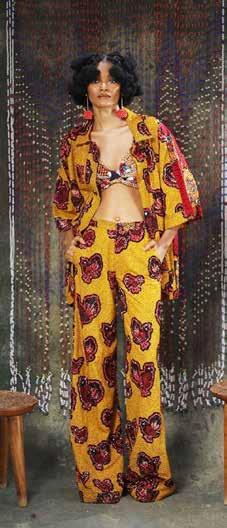


So, What does it mean to be Intentional?
At its heart, intentionality means acting with purpose instead of drifting on autopilot. It’s not just hoping a relationship works out; it’s doing the patient, everyday work that gives it a fighting chance. It’s choosing someone with your words, yes, but also with your time, your attention, and your effort — consistently, not just when you’re in the mood.
It’s the difference between sending a late-night “I miss you” text and making sure they never have to wonder if you’re thinking of them at all.
It’s not about intensity; it’s about steadiness.
The late Bell Hooks put it simply: “Love is an action, never simply a feeling.”
And intentionality is choosing that action again and again, even when it’s not easy.
Being intentional isn’t complicated — but it is demanding. It means practicing small, deliberate habits that centre care, clarity, and growth.
Communicate with precision, not assumption. Say what you mean. Don’t leave people guessing about where they stand. Prioritise presence over performance. Intentional love isn’t about grand romantic gestures once a year. It’s about texting back when you’re tired—asking thoughtful questions. Remembering what matters to them even when it’s not trending.
Invest in repair, not just chemistry. When things go wrong — and they will — being intentional means staying in the room emotionally. It means listening when it would be easier to defend. It means apologising well, not winning arguments. Protect what you’re building. Don’t let pride, distractions, or laziness do the slow work of erosion. Relationships decay quietly when no one is paying attention.
Intentionality doesn’t mean perfection. It just means choice — again and again, even when you’re busy, tired, or scared.
When you practice intentionality in love, something shifts: You stop treating connection like luck. You start realising that intimacy isn’t something that happens to you — it’s something you create.
Intentional love builds trust faster because it feels safe, not chaotic. It deepens intimacy because it makes people feel seen, not just wanted. It makes navigating conflict easier because both people know they’re standing on solid ground, not wishful thinking.
And the truth is, intentionality doesn’t just transform relationships.
It transforms you.
It pulls you out of the fantasy that love should be effortless, and into the real work of choosing — and being chosen — with your
Living Intentionally: Beyond Relationships
The beauty of real intentionality is that it doesn’t stay trapped in your love life.
It seeps into everything else.
When you practice being intentional with someone you love — speaking clearly, acting thoughtfully, showing up fully — you start noticing how often you’ve been half-living elsewhere.
You start asking yourself:
Am I working at this job because chose it — or because it was convenient?
Are these friendships feeding the person I’m becoming — or pulling me back to who I used to be?
Am I spending my days on autopilot — or am awake inside my own life?
Intentionality asks you to stop waiting for happiness to stumble into your life.
It asks you to craft your days.
To shape your friendships.
To cultivate joy instead of scrolling past it.
When you start moving this way, life doesn’t feel like it’s happening to you anymore.
It starts feeling like something you’re co-creating with every choice you make.
You become someone who doesn’t just hope things turn out well — you become someone who builds things worth having.
The more intentional you become, the less life feels random.
You stop clinging to outcomes you can’t control.
You start valuing the quiet, steady work of becoming the person your dreams require.
And when it comes to relationships, the shift is even more profound:
Instead of needing someone to “complete” you, you start choosing people who complement the fullness you’ve already cultivated.
Instead of hoping someone guesses your needs, you voice them and listen for theirs, too.
Instead of fearing conflict, you trust that growth is part of intimacy, not a threat to it.
Intentionality isn’t flashy.
It won’t win you social media points.
It’s not always exciting.
But it’s the only way to love — and to live — without regret. Because when you are intentional, you don’t just hope for beautiful things. You build them.
There’s a certain kind of satisfaction that comes from a smart fashion purchase — the kind that years later still earns you compliments, still feels like you and still fits into your life effortlessly. While trends may come and go (and come back again — hello, low-rise jeans we weren’t expecting), some pieces have a staying power that even time, Instagram algorithms, and celebrity “what’s in” lists can’t shake. If you’re building a wardrobe that lasts longer than your last situationship, these are the ten fashion investments you’ll never, ever regret.

We all love a moment — but the real icons know it’s the forever bag that makes the impact. A Bottega Jodie, a Lady Dior, a classic Hermès Kelly (if you’re lucky) — these bags aren’t just accessories, they’re statements. Choose wisely: go for neutral tones, exceptional craftsmanship, and silhouettes that make your heart skip a beat today and ten years from now. Pic – Kamsi Nnamani

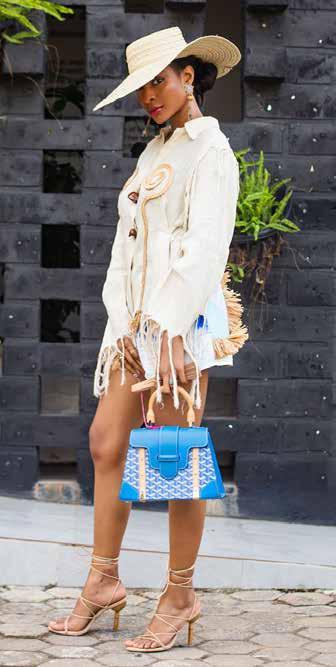
The right pair of strappy heels doesn’t just lift your height — it lifts your whole energy. Think barelythere sandals, sleek metallics, or a sharp black pair that makes your legs look endless. Invest in a pair that feels like jewellery for your feet. Bonus: you’ll never panic before weddings, dinners, or spontaneous flights to anywhere fabulous.
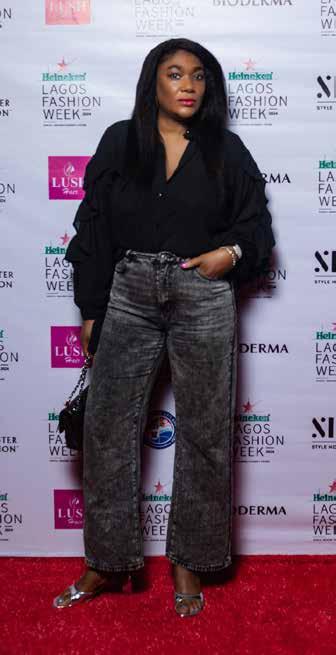
There’s a reason every off-duty model looks effortlessly good in jeans: it’s all about the cut.
A pair of high-waisted, structured, non-stretch (or light-stretch) jeans will work harder than half your wardrobe. Straight-leg, bootcut, or relaxed — find your fit, pay for the quality, and never look back.
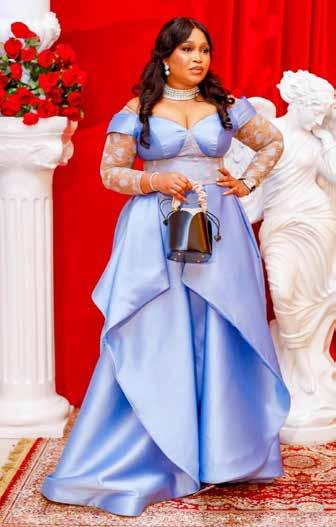
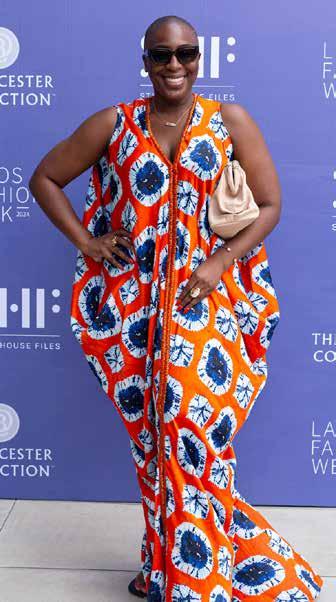

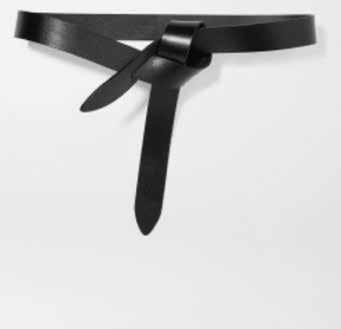
Oversized, cinched, cropped — it doesn’t matter your style. A perfectly tailored blazer pulls everything together, from denim to silk skirts to wide-leg trousers. Go for one in black, white, or a rich neutral like camel. Invest in cut and fabric — no limp shoulders allowed. It’s the instant outfit-maker you’ll wonder how you lived without.
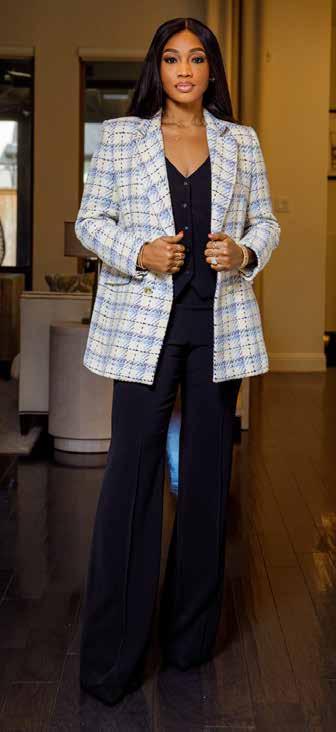
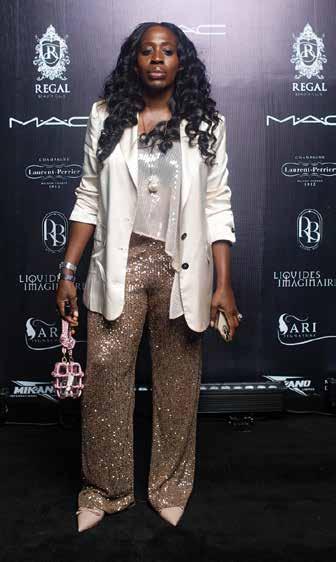
5. Everyday Statement Flats
There’s luxury, and then there’s understated luxury. A pair of designer flats — think Valentino Rockstuds, Chanel ballerinas, or a sleek Gucci mule — adds polish without screaming for attention. They’re the quiet flex for the days when you want comfort but
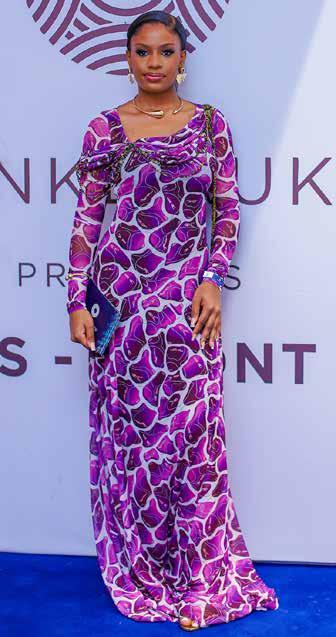
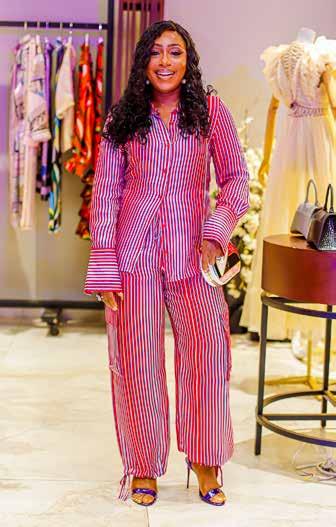

It’s official: 2025 is the year we’re travelling with more intention—and a little more flavour. No more going wherever everyone else is going just because it looks good on Instagram. This year is about rediscovering the thrill of exploration, chasing culture over crowds, and curating experiences that will actually stay with you long after the last photo dump. If you’ve been itching to stamp your passport (or just your heart) with something unforgettable, here are 10 places that should be on your 2025 travel list—and why


SaintTropez price tag. Whether you want to party in Nungwi or sip cocktails quietly in Matemwe, Zanzibar moves at your pace. Plus, it’s one visa stamp you’ll never regret.



2. CAPE TOWN, SOUTH AFRICA –BECAUSE THE ULTIMATE GIRL TRIP STILL STARTS HERE
Few cities can
like
Bay. 2025 Cape Town is still the IT girl of African cities—safe, beautiful, vibrant. And no, you’re not the only one who’s secretly planning outfits for a picnic at Kirstenbosch Gardens.
3. LAGOS, NIGERIA –BECAUSE
Hear us out: For those who don’t reside here, Lagos is a whole experience— and 2025 looks like its biggest year yet. Beach houses in Ilashe, art shows in Victoria Island, Jollof rice at every party, and nightlife that would leave Ibiza blinking. With more luxury hotels, new beach clubs, and a booming food scene, the Lagos of 2025 is bold, boujee, and breathtakingly alive. Pack your power fits — Lagos is not for the weak.



4. MARRAKECH, MOROCCO –BECAUSE CHAOS NEVER LOOKED SO BEAUTIFUL
Marrakech is the sensory overload we secretly crave. The souks, the scents, the colours, the rooftop brunches... it’s madness, but the kind you’ll want to bottle and keep forever. In 2025, Morocco is trending hard again, with gorgeous riads, luxury hammam spas, and desert glamping all over your feed. Marrakech reminds you that sometimes the messiest trips make the best memories.



5. ACCRA, GHANA – BECAUSE ‘DECEMBER IN GHANA’ ISN’T JUST A TREND ANYMORE
Accra isn’t just a December thing anymore — it’s a whole vibe year-round. Art galleries like Nubuke Foundation, beach days at Labadi, fashion pop-ups, spicy waakye plates, and nights that don’t end until sunrise. In 2025, Ghana’s creative scene is blowing up even more, making it the perfect time to visit and soak up the energy. Bonus: direct flights from Lagos and Abuja mean it’s practically in your backyard.


6. ANTALYA, TURKEY – BECAUSE EUROPE ON A BUDGET IS STILL A FLEX
If you’re craving European views without the Euro stress, say hello to Antalya. Dramatic coastlines, historic ruins, chic beach resorts, and ridiculously affordable shopping. 2025 is the year Turkey wins big among smart travelers who want Santorini vibes but still want to eat real meals without taking out a loan. Also, Turkish breakfasts deserve their own TED Talk.


7. KIGALI, RWANDA – BECAUSECLEAN,COOLCITIES ARE ALWAYS A GOOD IDEA
Kigali is the city that quietly wins hearts. It’s clean, calm, green, and low-key stylish. You can visit emotional landmarks like the Genocide Memorial, eat at restaurants that could sit pretty in Brooklyn or London, and still find yourself on a gorilla trek in the wild a few days later. Kigali isn’t flashy—it’s effortless, and that’s exactly why it deserves your time in 2025.


8. NAIROBI, KENYA – BECAUSE URBAN JUNGLE ISN’T JUST A PHRASE
Where else can you be in a traffic jam... and spot a giraffe out of your window? Nairobi’s magic is in the blend: skyscrapers, safaris, street markets, and sky lounges. With Kenya Airways ramping up more flight routes and Nairobi adding hip new restaurants and hotels, 2025 is shaping up to be the year this East African hub finally gets the flowers it deserves.


9. MAURITIUS – BECAUSE YOU DESERVE THAT HONEYMOONENERGY(SINGLEORNOT)
Who says you need a fiancé to do a honeymoon trip? Mauritius is the kind of island that reminds you you’re worthy of luxury, love, and lazy mornings just because. Think lush landscapes, endless beaches, creole food that slaps, and some of the best spas you’ll find anywhere. 2025 Mauritius is serving slow, soulful travel—and yes, that’s exactly what you need after surviving the chaos


10. ESSAOUIRA, MOROCCO – BECAUSE YOU WANT MARRAKECH WITHOUT THE MELTDOWNS
Marrakech’s cooler, calmer sister. Essaouira is where you go when you want all the beauty and culture without the sensory assault. Whitewashed buildings, breezy beaches, cosy seafood restaurants, and a creative spirit that feels both bohemian and boujee. 2025 travel is about finding hidden gems, and trust us—Essaouira is the gem.
